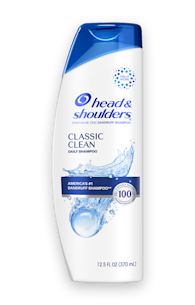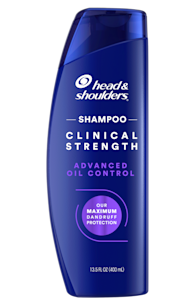HOW TO IDENTIFY THE DIFFERENT TYPES OF DANDRUFF

Did you know there isn’t just one single type or cause of dandruff? Getting rid of those white flakes can be as simple as changing your shampoo or hair care routine, but sometimes the cause is beyond a surface issue and needs prescription medication. Here, we’ll talk about the common causes of dandruff, and what to do to give yourself flake-free hair.
Dandruff from dry skin
Looks like: small, white flakes
Dandruff from dry skin is very common, especially in the winter months when both the cold winds outside and the heaters working overtime in your house can dry out your scalp. Dry skin dandruff can also be caused by frequently showering with very hot water.
To help prevent dandruff from dry skin, switch to a nourishing shampoo like our Supreme Nourish & Smooth Shampoo, and wash your scalp and hair in warm instead of hot water.
Dandruff from oily skin
Looks like: large, yellow, oily flakes
On the opposite end of the spectrum, if you scalp and hair is too oily, this can also contribute to dandruff. When the sebaceous glands on your scalp produce too much oil, this can clump together, irritating the skin on your scalp and contributing to itchy, oily dandruff.
To help prevent dandruff from oily hair, wash your scalp and hair regularly with an oil-control shampoo, like our Clinical Strength Dandruff Defense Advanced Oil Control Shampoo.
Dandruff from fungus
Looks like: large, white flakes
Funguses are found on the skin of every human being. But for some people, a common fungus can trigger an immune response that can cause dandruff. One of the common fungus-related causes of dandruff is Malassezia.
To help prevent dandruff from Malassezia, use a shampoo with zinc pyrithione, like our bestselling Classic Clean Shampoo. Studies have shown that zinc pyrithione can help inhibit Malassezia, decreasing visible flakes.
Dandruff from skin conditions
There are three major skin conditions that may appear on the scalp as dandruff.
Eczema: if you notice flaky, itchy, and sometimes rashy skin, this may be eczema. A gentle and moisturizing shampoo may help, but also consider seeing a doctor to confirm diagnosis and get a topical treatment if needed.
Scalp Psoriasis: if you notice fine, powdery flakes with a silver sheen, or raised and inflamed patches of skin covered in silvery dead skin cells, you may have scalp psoriasis. Consider seeing a doctor to confirm and get a treatment plan.
Seborrheic dermatitis: if you notice your scalp is extra oily with large, yellow flakes, and itchy red patches, you may have seborrheic dermatitis. Shampoos with zinc pyrithione are an excellent way to treat seborrheic dermatitis.
Whether your dandruff is caused by dry skin, oily skin, a fungus or skin condition, there are many ways to treat it! You can have a healthy, flake-free scalp and hair with just a little help from the experts.





